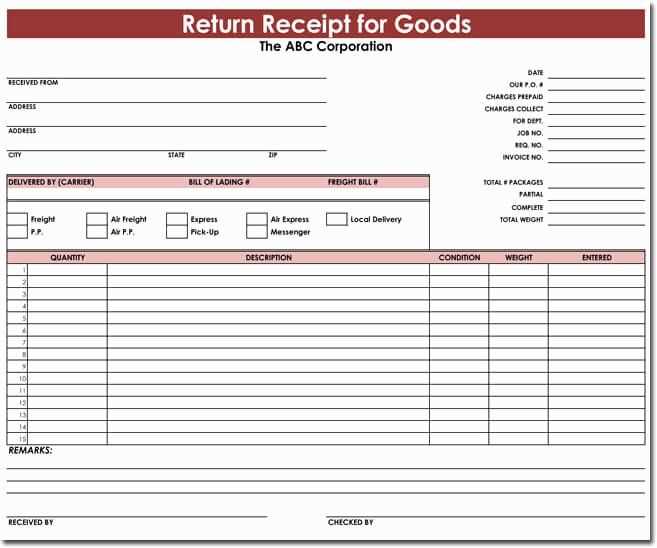
A well-structured receipt is essential when buying or selling a car through a private party transaction. It protects both the buyer and the seller, documenting the key details of the deal for future reference. Using a clear and detailed template ensures all critical information is captured, minimizing potential disputes.
The receipt should include the full names and contact information of both parties, along with the vehicle’s make, model, year, and Vehicle Identification Number (VIN). Specify the agreed purchase price and payment method, whether it’s cash, check, or another form of payment. Including a statement confirming that the vehicle is sold “as is” can also help set clear expectations.
Signatures from both the buyer and seller are crucial to validate the document. It’s recommended to date the receipt and keep multiple copies for record-keeping. A carefully prepared receipt provides peace of mind and legal clarity for both parties, ensuring a smooth transaction.
Template for Receipt of Private Party Car Purchase
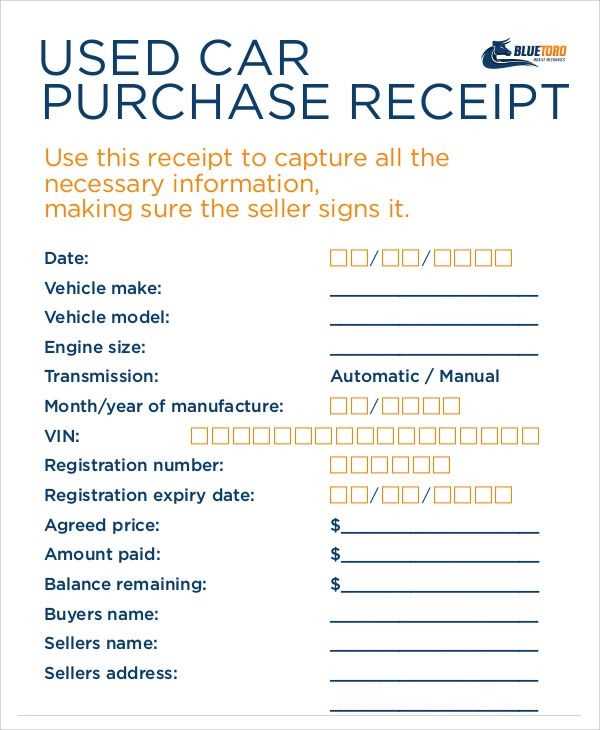
A receipt for a private party car purchase should clearly document key transaction details to protect both the buyer and seller. Include the full names and contact information of both parties at the top of the receipt. Specify the vehicle details, such as make, model, year, Vehicle Identification Number (VIN), and license plate number.
Essential Information to Include
List the date of sale and the agreed purchase price in both numeric and written form to avoid confusion. Indicate whether the payment was made in cash, by check, or through another method. If applicable, note any conditions of the sale, such as the vehicle being sold “as-is” without warranty.
Signatures and Legal Acknowledgment
Conclude the receipt with the signatures of both the buyer and seller, along with the date of signing. This formalizes the agreement and confirms that both parties acknowledge the terms of the sale. Retain a copy for personal records to ensure clarity and proof of the transaction.
Key Information to Include in a Car Purchase Receipt
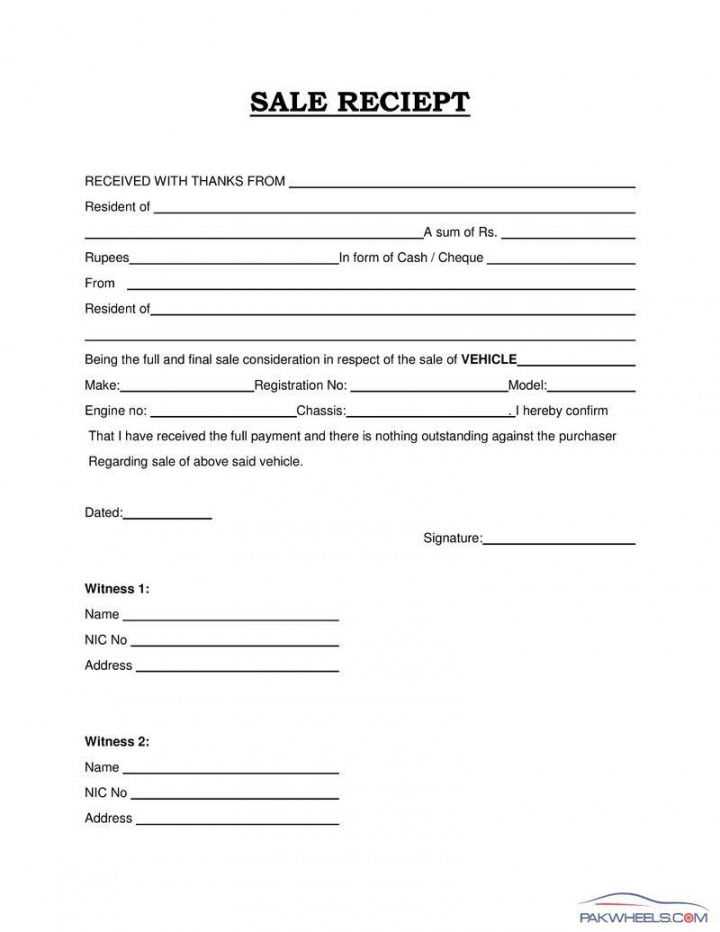
List the full legal names and contact details of both the buyer and seller. This ensures clear identification and avoids future disputes.
Include the vehicle details such as make, model, year, vehicle identification number (VIN), and current mileage. Accuracy here is critical for proper documentation.
Specify the purchase price and indicate the currency. If the payment involves multiple installments or methods, outline them clearly in the receipt.
Add the date of the transaction and the location where the sale took place. This provides a clear timeline for the transfer of ownership.
State that the vehicle is sold “as-is” unless there are additional terms or warranties agreed upon. If warranties exist, describe them in detail.
Both parties should sign the receipt to confirm their agreement. Keep a copy for personal records to protect against potential issues in the future.
Legal Considerations for Private Party Car Sale Receipts
Clearly state the full names and contact details of both the buyer and seller to avoid any ambiguity. Ensure the vehicle identification number (VIN), make, model, year, and mileage of the car are accurately recorded. These details confirm the exact vehicle being sold and protect both parties from future disputes.
Ownership Verification and Title Transfer
Verify that the seller is the legal owner of the vehicle by checking the title. Include a statement in the receipt that the seller confirms they hold clear ownership and that the vehicle is free from any liens. Ensure the title is signed over to the buyer at the time of sale to complete the ownership transfer.
As-Is Sale and Warranty Disclosures
Include an “as-is” clause in the receipt if the car is being sold without any warranty. This protects the seller from future liability related to mechanical issues or defects. If any guarantees or conditions are agreed upon, detail them explicitly in writing to avoid misunderstandings.
Both parties should sign and date the receipt. Keep a copy for personal records to ensure documentation is available if needed for legal or registration purposes.
How to Verify Buyer and Seller Information
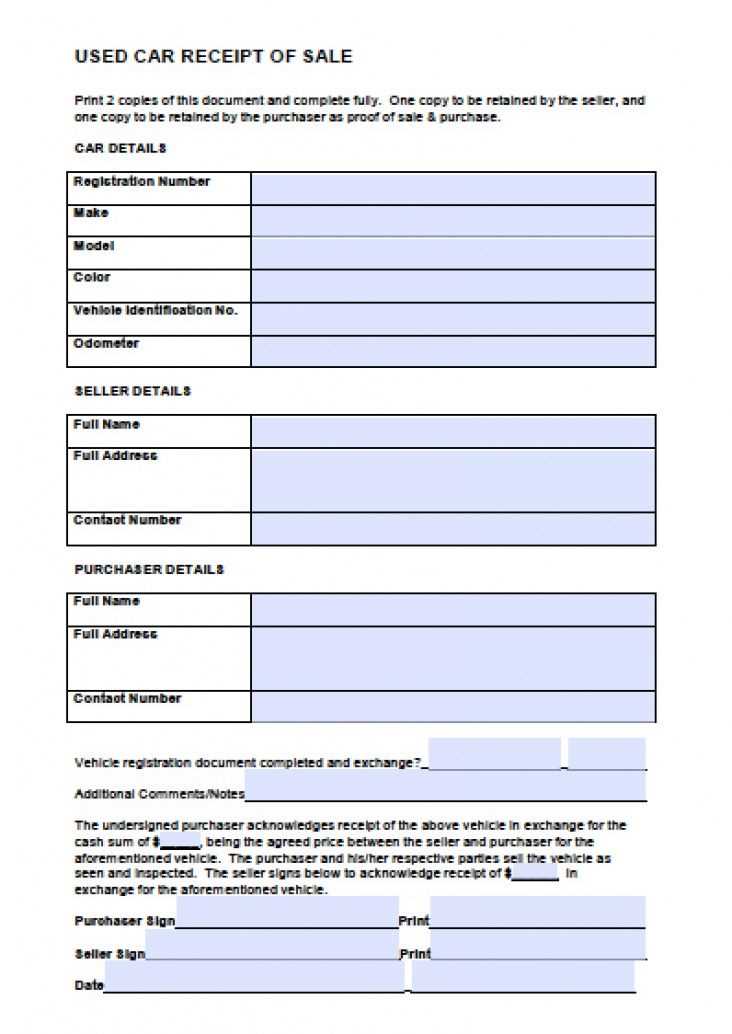
Confirming the identity of both buyer and seller is essential for a secure transaction. Follow these steps to ensure accuracy and minimize risks.
- Request Valid Identification: Ask for a government-issued ID from both parties. Verify the name and photo match the individual and record the details for your records.
- Check Vehicle Ownership: Ensure the seller is the registered owner. Cross-check the name on the vehicle title with their ID. If there is a lien on the vehicle, request documentation proving the loan has been satisfied.
- Verify Contact Information: Collect and confirm phone numbers, email addresses, and home addresses. Call or message the provided number to ensure it’s valid.
- Use Online Resources: Search public databases to verify registration and title history. This helps uncover potential issues like salvage titles or unresolved liens.
- Confirm Payment Source: If the payment is by check or wire transfer, contact the issuing bank to verify authenticity before finalizing the transaction.
Being thorough with these steps reduces risks and ensures both parties can proceed with confidence.
Describing the Vehicle Accurately on the Receipt
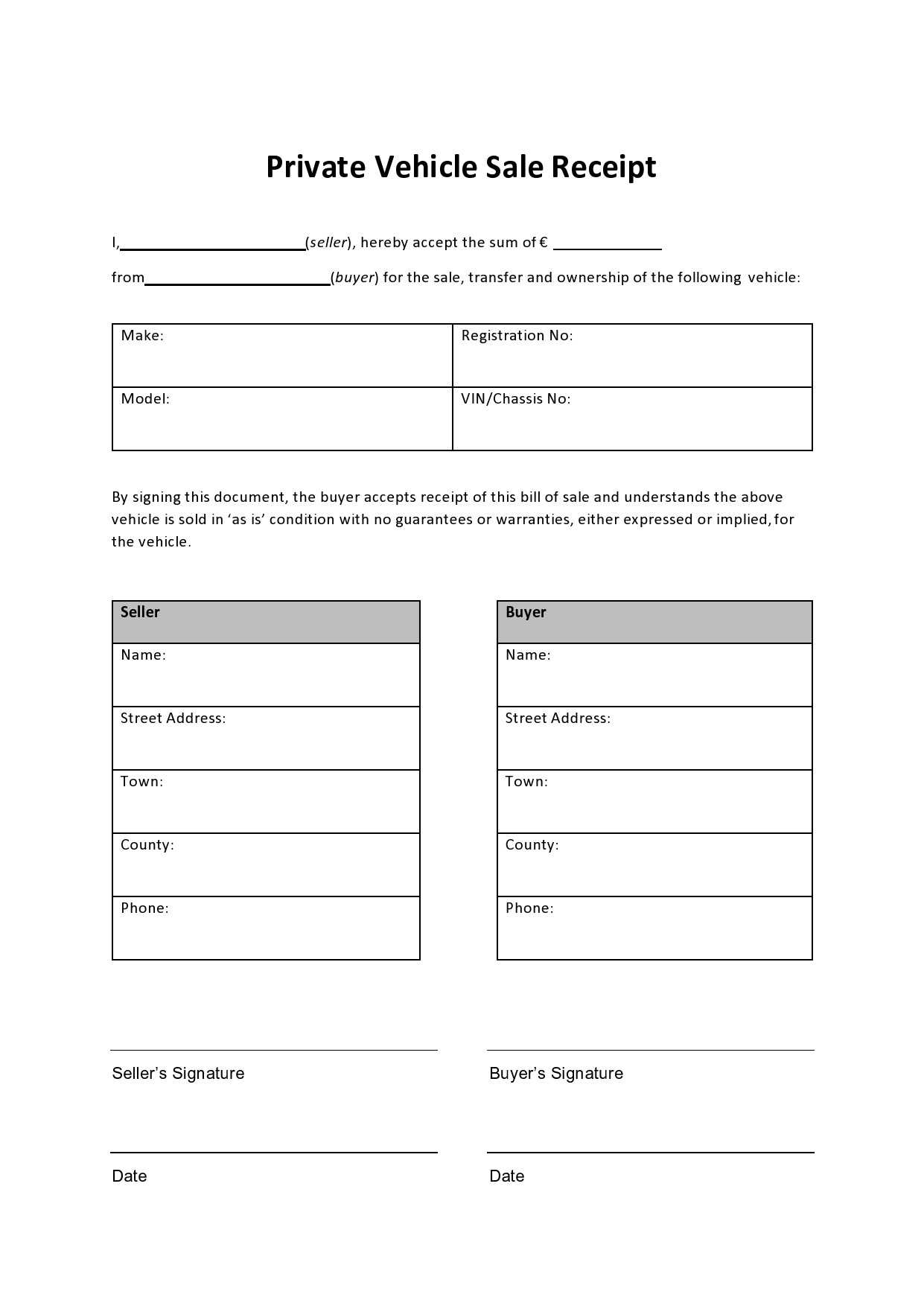
List the vehicle’s make, model, and year clearly to avoid any confusion. Include the Vehicle Identification Number (VIN) for precise identification, as it serves as a unique identifier for the car. Note the color and body style to provide additional clarity.
Specify the vehicle’s mileage at the time of sale. This detail is crucial for establishing the car’s condition and value. If there are modifications or aftermarket parts, describe them briefly but accurately. For example, mention upgrades like new tires, custom wheels, or a replacement engine.
Document any known defects or issues, such as mechanical problems or cosmetic damage. Transparency in this section protects both the buyer and seller. Use straightforward language and avoid subjective descriptions like “excellent condition” or “minor damage”–instead, be specific.
Lastly, include the vehicle’s registration or license plate number. This helps verify its identity and links it to official records. Ensuring these details are accurate and comprehensive will minimize disputes and build trust between both parties.
Payment Terms and Documentation
Specify the exact payment method in writing. Acceptable options include cash, certified check, or electronic transfer. Avoid personal checks unless trust is established, as they may take time to clear.
Include a clear statement about the full purchase price and any deposits paid in advance. Document the transaction date and time to provide a definitive record.
| Detail | Description |
|---|---|
| Payment Method | Cash, certified check, or electronic transfer |
| Purchase Price | Full amount agreed upon |
| Deposit (if any) | Amount paid before final payment |
| Transaction Date | Exact date and time of the sale |
Both parties must sign the receipt to confirm agreement. Ensure each receives a copy for their records. This protects both buyer and seller in case of disputes.
Providing Copies and Retaining Records
Provide the buyer with a signed copy of the receipt for their records. This should include all relevant details such as the car’s make, model, VIN number, sale price, and date of the transaction.
Both parties should keep a copy of the signed document for at least three years. This helps avoid potential disputes or issues related to the sale, such as claims of fraud or misrepresentation.
- Ensure the buyer receives a copy that includes the same details they signed, especially the car’s identification number (VIN).
- Both the seller and buyer should store copies in a safe and accessible location, such as a personal file or digital storage.
If any modifications or repairs are made after the sale, retain those records as well. These can serve as proof of the car’s condition post-sale and may be useful for tax or insurance purposes.
Keep all receipts related to the sale, including maintenance records, as they may be requested by government agencies or other parties in the future.

